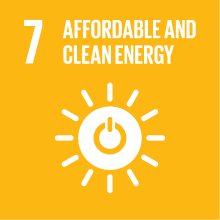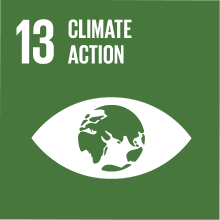EARTH SURFACE PROCESSES AND LAB
- Academic year
- 2020/2021 Syllabus of previous years
- Official course title
- GEODINAMICA ESTERNA E LABORATORIO
- Course code
- CT0365 (AF:296020 AR:163117)
- Teaching language
- Italian
- Modality
- On campus classes
- ECTS credits
- 6
- Degree level
- Bachelor's Degree Programme
- Academic Discipline
- GEO/02
- Period
- 1st Semester
- Course year
- 3
- Where
- VENEZIA
- Moodle
- Go to Moodle page
Contribution of the course to the overall degree programme goals
Specific objectives of the teaching are: to give know-how and operational capacity in studies connected with earth surface processes (morphogenesis vs pedogenesis), with emphasis on Quaternary deposits.
Expected learning outcomes
The student will have acquired the knowledge and the ability to analyze the cause/effect relationships between morphodynamic processes, morphostructures and morphoscultures.
Furthermore, the knowledge and ability to detect the effects of human interventions on the territory.
Ability to use and interpret aerial photographs of the territory to perform morphographic and morphometric analyzes, thanks to a limited knowledge of GIS software for the interpretation of digital photographs.
Furthermore, the student will have adequate knowledge and understanding of the geomorphological processes; this in relation to the spatial scales of the analyzed places as well as to the geological and climatic characteristics that characterize them. At the end of the course, the student is able to recognize morphogenic processes and related diagnostic forms.
Pre-requirements
Contents
- Principles and methods of geomorphology. Geomorphological systems. Temporal and spatial scale in geomorphic processes. Exogenous and endogenous factors. Physical and chemical weathering.
Definition of soil and its characters.
- Pedogenetic factors. Typology of profiles. Sampling techniques. Soil properties. Soil mapping. Overview of major international classification systems.
Dynamic slope.
- Evolution of the slopes. Relationship between alteration, erosion, transport and deposition along the slopes. Runoff splash, sheet, rill and gully erosion along a slope. Mass-wasting slow and fast. Landslides. Charts landslides. Gravitational deformation deep slope.
River morphology: processes and forms.
- Overview of hydrodynamics channeled waters. Modes of transport. Diagram of Hjulstroem. Slope of the riverbed and equilibrium profile. Types of river floodplains and their short-term dynamics. Alluvial fans. Fluvial terraces. Network analysis hydrographic.
Coastal morphology.
- Classification of the coasts. Dynamics of rocky coasts: wave cut-notches, wave cut-platforms. Fjords and rias. The typical profile of a beach. Depositional structures and delta forms.
Climatic Geomorphology
Glacial morphology.
- Types of glacier. Erosive Activities. Transport and Deposition. Glacial streams and derived morphologies. Glacial valleys.
Periglacial morphology
- Permafrost. Processes associated with permafrost. Processes caused by frost. Environmental problems. The function of permafrost in climate change
Morphology of a desert.
- The types of deserts. The wind processes. The aeolian deposits. Desertification.
Structural morphology.
- Types of surveys. The selective erosion. Morphologies typical of regions in horizontal layers (plateau, mesa), inclined layers.
Karst morphology.
- Typical shapes. Physical chemistry of the phenomenon and the role of climatic factors, lithological and topographical. Processes and forms of karst epigeo.
- Underground water circulation in karst massifs. Processes and forms of karst underground.
Remote sensing.
-Principles of aerophotogrammetry. Types of aerial photos. Criteria and factors of photo-interpretation. Geomorphological mapping. Introduction to GIS.
Environmantal geomorphology
In laboratory:
Geomorphological interpretations
- aerial photographs
- from satellite images
Geomorphological mapping
Referral texts
F. Dramis – Geografia Fisica – Piccin, Padova, 2005
Materials provided by the teacher.
Assessment methods
The test in the laboratory it is made of a geomorphological interpretation of the land through the analysis of aerial photographs. The interpretation of aerial photographs will take place by GIS. Through this tool will also be produced geomorphological maps that highlight the morphogenetic processes and related diagnostic forms. The weight of the grade will be 30% of the total.
The two grades will be integrated.
Type of exam
Teaching methods
The laboratory sessions include the following topics:
- Chemical analysis of soils.
- Introduction to the use of GIS software; interpretation of aerial photographs by GIS; construction of geomorphological maps.
Field trip with observations of forms and processes of several environments.
Further information
2030 Agenda for Sustainable Development Goals
This subject deals with topics related to the macro-area "Climate change and energy" and contributes to the achievement of one or more goals of U. N. Agenda for Sustainable Development


